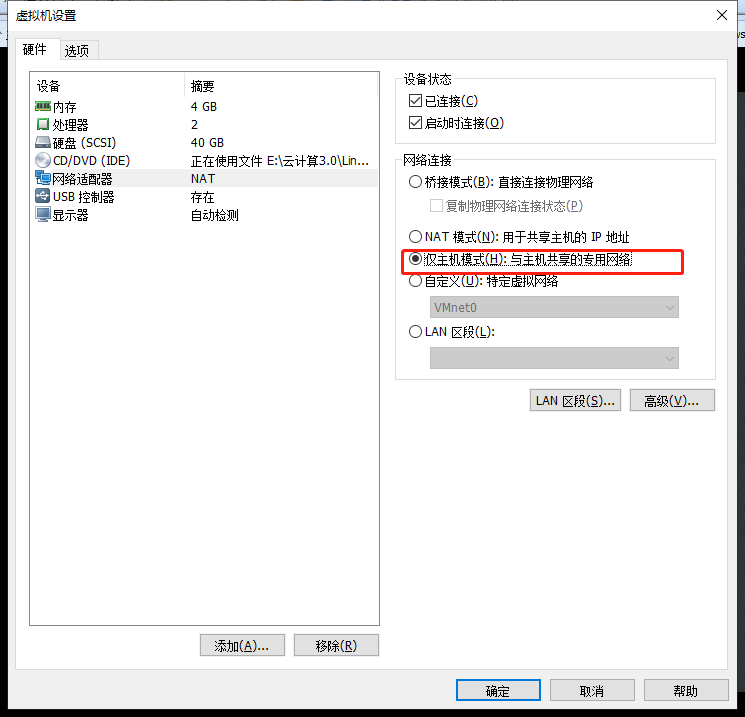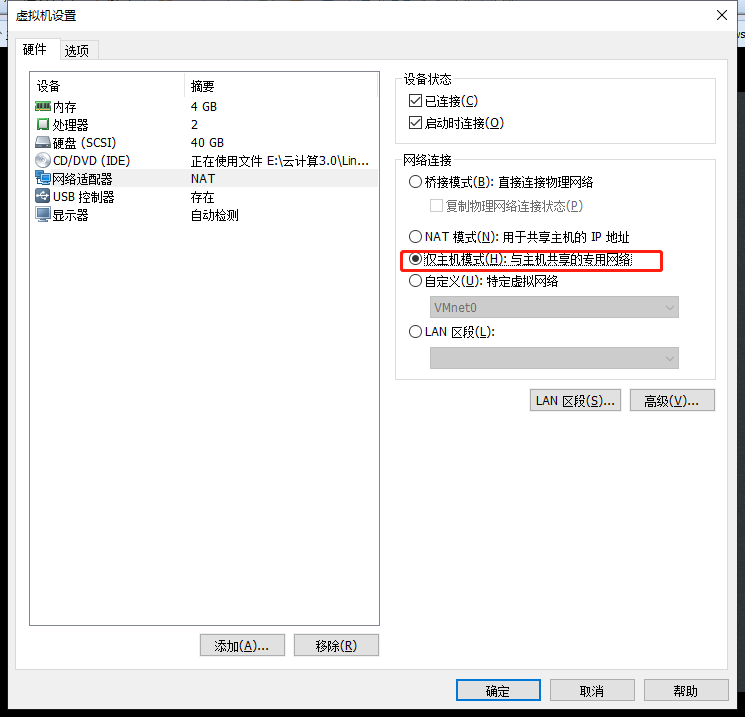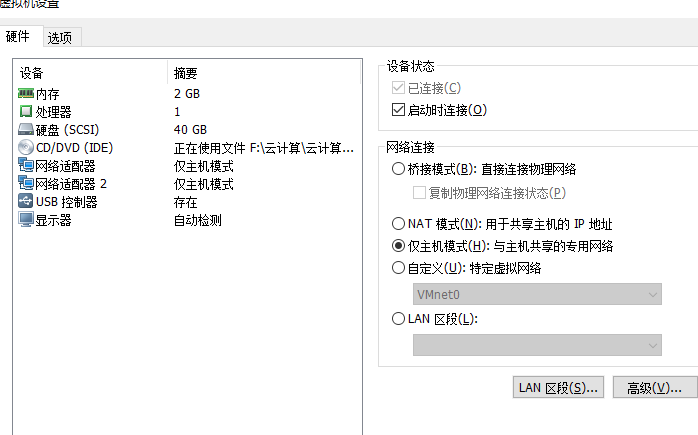Introduction to LVS
LVS (Linux Virtual Server), the Linux virtual server, is an open source load balancing project led by Dr. Zhang Wensong. At present, LVS has been integrated into the Linux kernel module.The project implements an IP-based load balancing scheduling scheme for data requests in the Linux kernel. The architecture of the scheme is shown in Figure 1. End Internet users access the company's external load balancing server from outside. The end user's Web requests are sent to the LVS scheduler, which decides to send the request to a back-end Web server based on its own preset algorithm, such as wheels.Query algorithms distribute external requests evenly to all servers in the back-end. Although an end-user's access to the LVS scheduler is forwarded to the real server in the back-end, if the real server connects to the same storage, the services provided are the same. No matter which real server the end-user visits, the content of the services is the same and the entire cluster is the same.It is transparent to users.Finally, depending on the working mode of LVS, the real server will choose different ways to send the data users need to the end user. The working mode of LVS is divided into NAT mode, TUN mode, and DR mode.
Understanding the principles of load balancing clustering
The Meaning of Clusters
**Cluster, Cluster, Cluster** Composed of multiple hosts, but external as a whole In Internet applications, as the site demands higher and higher hardware performance, response speed, service stability, data reliability, etc., a single server is unable to meet the requirements **Solutions** Use expensive small, mainframe computers Building a service cluster with a regular server
Cluster Classification
There are three types of clusters based on the target differences they target Load Balance Cluster High Performance Operational Cluster ** Load Balance Cluster ** To improve the responsiveness of the application system, to process as many access requests as possible, and to reduce latency as possible, to achieve high concurrent, high load LB overall performance Load allocation in LB depends on shunting algorithm of primary node **Highly Available Clusters** To improve the reliability of the application system and minimize interruption time to ensure high availability of services Fault Tolerance Effect of HA HA works in duplex and master-slave modes **High Performance Operations Cluster** To increase the CPU speed of the application system, expand hardware resources and analysis capabilities, and obtain HPC capabilities equivalent to those of large, supercomputers High performance computing clusters rely on distributed computing, parallel computing, and the integration of CPU, memory and other resources from multiple servers through dedicated hardware and software enables computing power that only, large, supercomputers can have
Load Balancing Cluster Mode Analysis and Mode of Work
Load Balancing Cluster is the most popular cluster type used by enterprises at present Cluster load scheduling technology has three working modes **Address Translation** **IP Tunnel** **Direct Routing**
NAT mode (Network Address Translation)
**NAT mode**, similar to the private network structure of a firewall, a load dispatcher acts as a gateway to all server nodes, which acts as an access gateway to the client and an access exit for each node to respond to the client Server nodes use private IP addresses and are on a physical network with the load dispatcher in copper, which provides better security than the other two methods
TUN mode (IP Tunnel)
**TUM mode**, with an open network architecture, the load dispatcher serves only as an access gateway to the client, and each node responds directly to the client through its own network connection without passing through the load dispatcher Server nodes are scattered across different locations in the Internet, have separate public network IP addresses, and communicate with each other through dedicated IP tunnels.All environments are public network environments
DR mode (Direct Routing)
Direct Routing
**DR mode**, which uses a semi-open network structure similar to TUN mode, but the nodes are not scattered, but are in the same physical network as the scheduler Load dispatcher connects to each node server over a local network without establishing a dedicated IP tunnel In LAN
Load Scheduling Algorithm for LVS
**Round Robin** Allocate the installation sequence of received access requests to each node (the real server) in the cluster in turn, treating each server equally, regardless of the actual number of connections and system load on the server ** Weighted Round Robin** The dispatcher can automatically query each node's load and dynamically adjust its weight based on the ability of the real server to allocate incoming access requests in turn Ensure that servers with high processing power take on more access traffic **Least Connections** Allocate access requests received to nodes with the least number of connections based on the connection transports established by the real server ** Weighted Least Connections ** Automatically adjust for real servers when there is a large performance difference between server nodes weight Nodes with higher weights will bear a larger proportion of active connection load
Let's do the experiment
Experimental structure:
We need five virtual machines 1 as Load Balance Scheduler Outside Network Address: 12.0.0.1 Intranet: 192.168.200.1 4 Web server apache node: 192.168.200.110 5 Site Server Node: 192.168.200.120 6 nfs shared storage node: 192.168.200.130 7 Client 12.0.0.12
First to 6 install ngs and remote call packages
[root@localhost ~]# yum install nfs-utils rpcbind -y
4,5 Install web Services
[root@localhost ~]# yum install httpd -y
1 Install LVS Load Balance Scheduler
[root@localhost ~]# yum install ipvsadm -y
Configure 6nfs Server
Host-only mode Our servers need to be in a local area network

Configure Fixed IP
[root@localhost ~]# vim /etc/sysconfig/network-scripts/ifcfg-ens33 #Configure ens33 network card BOOTPROTO=static #static state DEFROUTE=yes IPV4_FAILURE_FATAL=no IPV6INIT=yes IPV6_AUTOCONF=yes IPV6_DEFROUTE=yes IPV6_FAILURE_FATAL=no IPV6_ADDR_GEN_MODE=stable-privacy NAME=ens33 UUID=66a1e3d6-5c57-42ab-9996-b942b049ef85 DEVICE=ens33 ONBOOT=yes IPADDR=192.168.200.130 #IP Address NETMASK=255.255.255.0 #Subnet Mask GATEWAY=192.168.200.1 #gateway
Open Service
[root@localhost ~]# systemctl stop firewalld.service s[root@localhost ~]# setenforce 0 [root@localhost ~]# systemctl start nfs.service [root@localhost ~]# systemctl status nfs.service ● nfs-server.service - NFS server and services Loaded: loaded (/usr/lib/systemd/system/nfs-server.service; disabled; vendor preset: disabled) Active: active (exited) since 2 2019-11-26 1 [root@localhost ~]# systemctl start rpcbind.service [root@localhost ~]# systemctl status rpcbind.service ● rpcbind.service - RPC bind service Loaded: loaded (/usr/lib/systemd/system/rpcbind.service
Configure shared directories, giving 777 permissions
[root@localhost ~]# vim /etc/exports /usr/share *(ro,sync) #Read-only, sync all servers accessible /opt/accp 192.168.200.0/24(rw,sync) #Shared to 200 accessible, readable, writable, synchronized /opt/benet 192.168.200.0/24(rw,sync) [root@localhost ~]# cd /opt/ [root@localhost opt]# mkdir benet accp [root@localhost opt]# chmod 777 accp/ benet/ #Give Readable Writable Executable [root@localhost opt]# ls -l //Total dosage 0 drwxrwxrwx. 2 root root 6 11 February 2617:13 accp drwxrwxrwx. 2 root root 6 11 February 2617:13 benet drwxr-xr-x. 2 root root 6 3 February 26, 2015 rh
Publish Sharing
[root@localhost opt]# exportfs -rv exporting 192.168.200.0/24:/opt/benet exporting 192.168.200.0/24:/opt/accp exporting *:/usr/share
4, web server host-only mode, configure fixed IP

[root@localhost ~]# vim /etc/sysconfig/network-scripts/ifcfg-ens33 BOOTPROTO=static DEFROUTE=yes IPV4_FAILURE_FATAL=no IPV6INIT=yes IPV6_AUTOCONF=yes IPV6_DEFROUTE=yes IPV6_FAILURE_FATAL=no IPV6_ADDR_GEN_MODE=stable-privacy NAME=ens33 UUID=c3f0a196-6819-4702-9b54-7cad18402591 DEVICE=ens33 ONBOOT=yes IPADDR=192.168.200.110 NETMASK=255.255.255.0 GATEWAY=192.168.200.1
Open services to test connectivity with 6nfs servers
[root@localhost ~]# systemctl restart network [root@localhost ~]# systemctl stop firewalld.service [root@localhost ~]# setenforce 0 [root@localhost ~]# systemctl start httpd.service [root@localhost ~]# netstat -ntap | grep 80 tcp6 0 0 :::80 :::* LISTEN 100863/httpd [root@localhost ~]# ping 192.168.200.130 PING 192.168.200.130 (192.168.200.130) 56(84) bytes of data. 64 bytes from 192.168.200.130: icmp_seq=1 ttl=64 time=0.724 ms 64 bytes from 192.168.200.130: icmp_seq=2 ttl=64 time=0.356 ms
Mount, write a file in web4, test if 6nfs server has stored this file
[root@localhost ~]# showmount -e 192.168.200.130 #Test 6 Server Shared Directory Export list for 192.168.200.130: /usr/share * /opt/benet 192.168.200.0/24 /opt/accp 192.168.200.0/24 [root@localhost ~]# mount.nfs 192.168.200.130:/opt/accp /var/www/html/ #mount [root@localhost ~]# df -h //Question System Capacity Used Available%Mountpoint /dev/mapper/centos-root 20G 3.4G 17G 17% / devtmpfs 897M 0 897M 0% /dev tmpfs 912M 0 912M 0% /dev/shm tmpfs 912M 9.6M 903M 2% /run tmpfs 912M 0 912M 0% /sys/fs/cgroup /dev/sda1 6.0G 179M 5.9G 3% /boot /dev/mapper/centos-home 10G 37M 10G 1% /home tmpfs 183M 40K 183M 1% /run/user/0 tmpfs 183M 4.0K 183M 1% /run/user/42 192.168.200.130:/opt/accp 20G 3.8G 17G 19% /var/www/html [root@localhost ~]# cd /var/www/html/ [root@localhost html]# echo "THII IS ACCP WEB" > index.html #6 Servers to test [root@localhost opt]# cd accp/ [root@localhost accp]# ls index.html
The same is true for 5web servers, in host mode only, with fixed IP bound

[root@localhost ~]# vim /etc/sysconfig/network-scripts/ifcfg-ens33 BOOTPROTO=static DEFROUTE=yes IPV4_FAILURE_FATAL=no IPV6INIT=yes IPV6_AUTOCONF=yes IPV6_DEFROUTE=yes IPV6_FAILURE_FATAL=no IPV6_ADDR_GEN_MODE=stable-privacy NAME=ens33 UUID=a6cf69fe-eb42-4a99-9239-0da4cdeae0c7 DEVICE=ens33 ONBOOT=yes IPADDR=192.168.200.120 NATMASK=255.255.255.0 GATEWAT=192.168.200.1 [root@localhost ~]# systemctl restart network [root@localhost ~]# systemctl stop firewalld.service [root@localhost ~]# setenforce 0
Mount, write a file in web4, test if 6nfs server has stored this file
[root@localhost ~]# mount.nfs 192.168.200.130:/opt/benet /var/www/html/ [root@localhost ~]# df -h //Question System Capacity Used Available%Mountpoint /dev/mapper/centos-root 20G 4.3G 16G 22% / devtmpfs 897M 0 897M 0% /dev tmpfs 912M 0 912M 0% /dev/shm tmpfs 912M 9.5M 903M 2% /run tmpfs 912M 0 912M 0% /sys/fs/cgroup /dev/sda1 6.0G 179M 5.9G 3% /boot /dev/mapper/centos-home 10G 36M 10G 1% /home tmpfs 183M 44K 183M 1% /run/user/0 192.168.200.130:/opt/benet 20G 3.8G 17G 19% /var/www/html [root@localhost ~]# cd /var/www/html/ [root@localhost html]# echo "this is benet web" > index.html [root@localhost html]# systemctl start httpd.service #6 to test [root@localhost accp]# cd ../ [root@localhost opt]# cd benet/ [root@localhost benet]# ls index.html
1 Load Balance Scheduler Host-only mode, bind two network cards, configure network cards

TYPE=Ethernet PROXY_METHOD=none BROWSER_ONLY=no BOOTPROTO=static DEFROUTE=yes IPV4_FAILURE_FATAL=no IPV6INIT=yes IPV6_AUTOCONF=yes IPV6_DEFROUTE=yes IPV6_FAILURE_FATAL=no IPV6_ADDR_GEN_MODE=stable-privacy NAME=ens36 DEVICE=ens36 ONBOOT=yes IPADDR=12.0.0.1 NETMASK=255.255.255.0 BOOTPROTO=static DEFROUTE=yes IPV4_FAILURE_FATAL=no IPV6INIT=yes IPV6_AUTOCONF=yes IPV6_DEFROUTE=yes IPV6_FAILURE_FATAL=no IPV6_ADDR_GEN_MODE=stable-privacy NAME=ens33 UUID=849aa04e-1874-490f-8cb0-b2fde4b9a6f8 DEVICE=ens33 ONBOOT=yes IPADDR=192.168.200.1 NETMASK=255.255.255.0 [root@localhost ~]# systemctl restart network #service network restart
Turn on routing forwarding, NAT conversion
vim /etc/sysctl.conf #Modify Profile net.ipv4.ip_forward=1 #Add one [root@localhost ~]# sysctl -p #Effective Routing Forwarding net.ipv4.ip_forward = 1 [root@localhost ~]# iptables -t nat -F #Clear NAT Table [root@localhost ~]# iptables -F #Clear Forwarding Table [root@localhost ~]# iptables -t nat -A POSTROUTING -o ens36 -s 192.168.200.0/24 -j SNAT --to-source 12.0.0.1 #In the nat table - A in the POSTROUTING column - o specifies the export - s specifies the source address - j does the nat conversion to 12.0.0.1
De-7 Client Binding IP

Go to the 4web server to test if it can connect with the client
[root@localhost html]# ping 12.0.0.12 PING 12.0.0.12 (12.0.0.12) 56(84) bytes of data. 64 bytes from 12.0.0.12: icmp_seq=1 ttl=127 time=0.815 ms 64 bytes from 12.0.0.12: icmp_seq=2 ttl=127 time=0.752 ms 64 bytes from 12.0.0.12: icmp_seq=3 ttl=127 time=0.727 ms 64 bytes from 12.0.0.12: icmp_seq=4 ttl=127 time=0.712 ms
Loading LVS Kernel Modules
[root@localhost ~]# modprobe ip_vs [root@localhost ~]# cat /proc/net/ip_vs #View LVS Kernel Version IP Virtual Server version 1.2.1 (size=4096) Prot LocalAddress:Port Scheduler Flags -> RemoteAddress:Port Forward Weight ActiveConn InActConn
Open LVS Kernel
Save first
[root@localhost ~]# ipvsadm --save > /etc/sysconfig/ipvsadm [root@localhost ~]# systemctl start ipvsadm.service [root@localhost ~]# systemctl status ipvsadm.service ● ipvsadm.service - Initialise the Linux Virtual Server Loaded: loaded (/usr/lib/systemd/system/ipvsadm.service; disabled; vendor preset: disabled) Active: active (exited) since 2 2019-11-26 17:59:41 CST; 9s ago
Write LVS Virtual Server script, launch script
[root@localhost ~]# cd /opt/ [root@localhost opt]# vim nat.sh #!/bin/bash ipvsadm -C #Clear Cache ipvsadm -A -t 12.0.0.1:80 -s rr #Add Virtual Server, -A-t Specify Port-s Specify Algorithmic Polling ipvsadm -a -t 12.0.0.1:80 -r 192.168.200.110:80 -m #-a-t Specify Port-r Specify Real Node Server-m Specify NAT ipvsadm -a -t 12.0.0.1:80 -r 192.168.200.120:80 -m ipvsadm [root@localhost opt]# source nat.sh #Startup script IP Virtual Server version 1.2.1 (size=4096) Prot LocalAddress:Port Scheduler Flags -> RemoteAddress:Port Forward Weight ActiveConn InActConn TCP localhost.localdomain:http rr -> 192.168.200.110:http Masq 1 0 0 -> 192.168.200.120:http Masq 1 0 0
NAT Address Translation
[root@localhost opt]# iptables -F #Clear Forwarding Table [root@localhost opt]# iptables -t nat -F #Clear Forwarding Table [root@localhost opt]# iptables -t nat -A POSTROUTING -o ens36 -s 192.168.200.0/24 -j SNAT --to-source 12.0.0.1 #In the nat table - A in the POSTROUTING column - o specifies the export - s specifies the source address - j does the nat conversion to 12.0.0.1
Go to the client to test if you can access the content of the web server through an external network address
